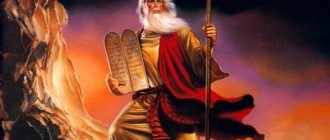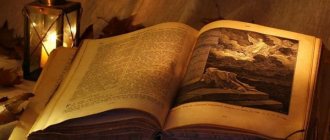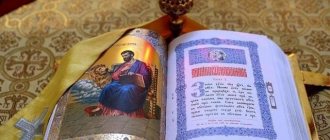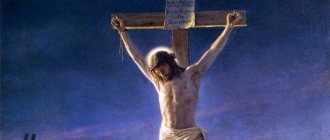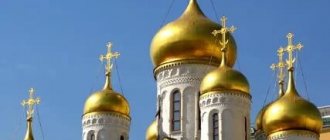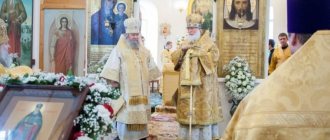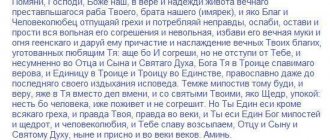It can be difficult for a newly churchgoer to understand the terms. In Orthodoxy - articles, sermons, everyday life - the words “Bible” and “Gospel” often replace each other. But these are far from synonymous.
Calling one another is a grave mistake. To understand the difference between the Gospel and the Bible, the Old and New Testaments, a few minutes will be enough. So let's not waste time!
Being
The first book of the Bible, as tradition claims, was written by the Prophet Moses
The Bible is a collection of texts, the earliest of which are attributed to the prophet Moses
Biblical Engravings by Carolsfeld.
The Testament of the Bible is a group of texts united under one cover. They are divided into two large sections:
- Old Testament.
- New Testament.
Today it is impossible to determine exactly when the first text of the Bible appeared.
Tradition claims that the author of the first book of the Bible, Genesis, is the prophet Moses. The date of his life is a matter of debate. We are probably talking about the period of the 16th–13th centuries BC.
The Bible was written by different people over many centuries.
At the same time, textual scholars do not agree with this dating of the first books of the Bible. They believe that these manuscripts appeared no earlier than the 8th century. But at the same time, they note that there were source documents that were older.
Compromise Conclusion - The Bible was written down late, but previously existed in the form of oral tradition. This version has many supporters.
After Moses, his disciple Joshua continued to write the Bible.
After Moses, the Bible was continued to be written by his disciple Joshua, then by kings and prophets, and in New Testament times it was completed by the apostles.
Who wrote the Gospels
The authors of the Gospel are the apostles, disciples of Christ (formally), it is believed that Scripture was created by Divine inspiration. The apostles described those events that they personally witnessed and participated in. The history of the creation of the New Testament also speaks in favor of the truth of what is written in the Gospel. After the crucifixion of Christ, His disciples were absolutely broken and depressed. Everything they believed in collapsed in one moment. It would be logical to lead a quiet and calm life, admitting defeat. They might even have to go into hiding. But, having received the news of the Resurrection of Christ, they risked their lives to preach His word and, without agreement, risked themselves by accepting martyrdom.
The Old Testament consists of the Pentateuch, the Scriptures, Poetic Teachings and the Books of the Prophets
Old Testament
part of the Bible that was written before the birth of Christ
The Old Testament is texts that were written before the birth of Christ. Many archaeological finds make it possible to determine with great accuracy which books were traditionally included in this list.
There are several canons - the composition of the books is slightly different in them and some are distributed differently into sections.
The Prophet Moses not only gave the world the Ten Commandments, but also wrote the first books of the Bible
Pentateuch
the first five books of the Bible about the creation of the world and the history of the Jewish people
The earliest books of the Bible known to us are called the Pentateuch of Moses. Here is their list:
- Being.
- Exodus.
- Leviticus.
- Numbers.
- Deuteronomy.
They tell about large-scale events in our world, starting from its creation, but gradually focus on the fate of the people of Israel. The Jewish patriarchs take turns at the center of the narrative: Abraham, Isaac, Israel, Joseph.
Exodus and subsequent books tell the story of the escape of the people of Israel from slavery in Egypt. The Jews receive God's law on Mount Sinai.
Moral and everyday rules for priests and ordinary people are described. At the end of Deuteronomy, Moses dies. For many, this scene is a reason to doubt the authorship of Moses.
The sections follow:
- Scriptures (historical texts):
- Book of Joshua.
- Book of Judges of Israel.
- Book of Ruth.
- 2 Books of Kings.
- 2 Books of Chronicles.
- Book of Ezra.
- Book of Esther.
Scriptures
historical texts, works of the sages of Israel, are part of the Bible
In the Scriptures we read a lot about the history of Israel, great kings and prophets, wars, etc. But the central theme still remains God:
“Go out and stand on the mountain before the Lord, and behold, the Lord will pass by, and a great and strong wind will rend the mountains and break in pieces the rocks before the Lord, but the Lord will not be in the wind; after the wind there is an earthquake, but the Lord is not in the earthquake; after the earthquake there is fire, but the Lord is not in the fire; after the fire there is a still breath of wind, [and the Lord is there].”
(1 Kings 19:11-12)
- Poetic teachings:
- Job.
- Pasaltyr.
- Proverbs of Solomon.
- Ecclesiastes.
- Song of Songs.
The theme of praising God is strong here; the question of the lifestyle of a believer is often raised. But there are also completely unexpected genre deviations. For example, a marriage song or historical excursions. Manuscripts do not ignore the theme of love:
“Put me like a seal on your heart, like a ring on your hand: for love is strong as death; fierce, like hell, jealousy; her arrows are arrows of fire; she has a very strong flame.
Great waters cannot extinguish love, and rivers cannot drown it. If anyone were to give all the wealth of his house for love, he would be rejected with contempt.”
(Song of Songs 8:6–7)
- Prophets:
- Isaiah.
- Jeremiah.
- Jeremiah's cry.
- Baruch.
- Ezekiel.
- Daniel.
- Hosea.
- Joel.
- Amos.
- Avdiy.
- And she.
- Micah.
- Nahum.
- Habakkuk.
- Zephaniah.
- Haggai.
- Zechariah.
- Malachi.
Prophets
section of the Bible consists of a collection of books about predictions, miracles and fantastic images
These books are full of predictions, stories of miracles and fantastic images. The listed texts are divided into early and late. Some have more historicism, others have an emphasis on prophecy.
The Old Testament book of Ezekiel is full of mysterious images. There is an opinion that the vision of the four animals is a prophecy about the four evangelists
There are also non-canonical texts. They are not found in the Hebrew version of the Old Testament. These texts were written in the last few centuries BC. These books are considered uninspired, but useful reading:
- Second Book of Ezra.
- Book of Tobit.
- Book of Judith.
- Book of Wisdom of Solomon.
- Book of Wisdom of Jesus, son of Sirach.
- The Epistle of Jeremiah.
- Book of Baruch.
- First Book of Maccabees.
- Second Book of Maccabees.
- Third Book of Maccabees.
- Third Book of Ezra.
In addition to the non-conical books, there is apocryphal literature, such as the Book of Jubilees and the Testament of Abraham. These books are rejected by the Jewish and Christian traditions.
The Old Testament is the part of the Holy Scriptures common to Judaism and Christianity.
Language of Scripture
The ancestors collected valuable information bit by bit over the years. Most of the books of the Old Testament were written in Hebrew. Some narrators spoke in Aramaic. The New Testament is written almost entirely in ancient Greek.
Interesting to know! Even though the Gospel is written in ancient Greek, those who know the modern language of Greece will have a difficult time reading the original. Moreover, the language in which the New Testament was written is usually called the Koine dialect, and this language is not similar to the one in which all the great works of antiquity were written.
The New Testament includes the Gospels, Acts of the Apostles, Epistles, and Revelation
New Testament
part of the Bible consists of books written after the birth of Christ and includes the Gospel
The New Testament is all biblical texts written after the birth of Christ.
The central theme of the New Testament of the Bible is the teaching and life of Jesus Christ.
Apostle Paul, author of several epistles
The composition of the books here is as follows:
4 Gospels:
- Gospel of Matthew;
- Gospel of Mark;
- Gospel of Luke;
- Gospel of John.
History book:
- the acts of the holy apostles.
Messages:
- message of James;
- 1st Peter;
- 2 Peter;
- 1st John.
Messages
a collection of seven apostolic epistles included in the New Testament canon
- 2 John;
- 3 John;
- the epistle of Jude;
- Romans;
- 1 Corinthians;
- 2 Corinthians;
- Epistle to the Galatians;
- Epistle to the Ephesians;
- Philippians;
- Epistle to the Colossians;
- 1 Thessalonians;
- 2 Thessalonians;
- 1st Epistle to Timothy;
- 2 Timothy;
- Epistle to Titus;
- letter to Philemon;
- Epistle to the Hebrews.
Prophetic book:
- revelation of John the Theologian.
There is no confusion with the composition of the books in the New Testament. And there is reason for this: the list of manuscripts was determined by a collection of theologians in the first centuries.
Initially, there were some difficulties in determining what was canonical literature and what was apocrypha. But subsequently the New Testament became established in the form we have today.
The Gospels are texts about the life of Christ, there are 4 of them in the canon, and in total there are 77 books in the Bible
Gospel
four books of the New Testament about the life, teachings, death and resurrection of Jesus Christ
The gospel is only part of the Bible.
Often the Gospel is called at once. Usually all 4 canonical texts from the 77 books of the Bible.
Image of 4 evangelists, next to each is a creature symbolizing it
And at the same time, it is the name of a genre of religious literature. The Gospel is characterized by the following features:
- it describes episodes from the life of Jesus Christ (not excluding events after his resurrection);
- it contains the sayings of the Savior.
Canonical texts meet both requirements:
“Thus it is written, and thus it was necessary for Christ to suffer, and to rise from the dead on the third day, and that repentance and forgiveness of sins should be preached in His name to all nations, beginning at Jerusalem. You are witnesses to this.”
(Luke 24:46-48)
“Jesus spoke again to the people and said to them, “I am the light of the world; whoever follows Me will not walk in darkness, but will have the light of life.
Then the Pharisees said to Him:
You testify about Yourself, Your testimony is not true.
Jesus answered and said to them: If I testify of Myself, My testimony is true; because I know where I came from and where I am going; but you do not know where I come from and where I am going.
Saint Luke
apostle
You judge according to the flesh; I don't judge anyone. And if I judge, then My judgment is true, because I am not alone, but I and the Father who sent Me. And in your law it is written that the testimony of two people is true.
I testify of Myself, and the Father who sent Me testifies of Me. Then they said to Him: Where is Your Father? Jesus answered: You know neither Me nor My Father; If you knew Me, you would also know My Father.”
(John 8: 12–19)
Ideologically, these texts are the central part of the New Testament, the Bible. Almost all of Holy Scripture is structured in such a way that it either foreshadows the birth of the Savior or interprets His inheritance.
It is impossible to separate the Gospel from the New Testament, because it is its main engine.
There are four Gospel texts in the Bible. The authorship of the Gospels is a matter of debate. The point is that they are not signed. The labels “Mark,” “Luke,” “John,” and “Matthew” are not uncontroversial. What is certain is that the author of the Gospel of Luke also wrote the Acts of the Holy Apostles.
This is clear from textual examination. But the author of the Gospel of John hardly had a hand in the text of the Revelation of John the Theologian - at least that’s what researchers think.
The earliest of the canonical Gospels turned out to be the work of Mark and the lost source Q. The books of Luke and Matthew were written on the basis of these two texts. And the manuscript of John the Theologian is the latest.
It is noteworthy that of the people credited with authorship, only the Apostle John could have been a witness to the New Testament events. The rest had the opportunity to simply record other people's memories.
What is the Gospel?
As is already known, the Gospel is a description of the life path of Christ.
Why did some of the Gospels become canonical, and others not? The fact is that these four Gospels have practically no contradictions, but simply describe slightly different events. If the writing of a certain book by the apostle is not questioned, then the church does not prohibit familiarization with the apocrypha. But such a Gospel cannot become a moral guide for a Christian.
There are apocryphal Gospels, they are not in the Bible due to contradictions with the Christian tradition
But it would be a mistake to say that the gospel is exclusively part of the Bible. There are apocryphal Gospels that are not included in the Bible.
Apocrypha
a text that claims to be sacred, but is rejected by the Holy Church and is not included in the canon of the Bible
The reasons for rejecting a particular text are different. Most often, the apocrypha simply does not correspond to the ideas of the Christian tradition. The fact is that at the beginning of our era there were several branches of followers of Christ.
One of the brightest is the Gnostics. They put secret knowledge at the forefront of everything. Through him, the Gnostics intended to reach spiritual heights.
The decisive word then remained with Rome. The government was choosing a religion to replace paganism. If the choice had fallen on the Gnostics, the Bible would look different now.
But preference was given to today's tradition. The texts were divided into canonical and heretical.
Canonical writings were copied, distributed, commented on. The heretics were destroyed. Therefore, many texts from Mark and Luke have been preserved, but some of the Gospel of Eve is known only from a random quote:
“...I was on a high mountain, and I saw a great man and a small one next to him, and I heard a thunderous voice, and I approached to hear what was being said.
And he said: “I am you, and you are Me, and where you are, there I am, and I am in everything, and wherever you wish, you gather Me, and by collecting Me, you gather yourself too...”
Some apocrypha are simply a collection of myths about Jesus, others are a cover for teachings alien to modern Christianity. The story of the Gospel of Mary is noteworthy.
Apocrypha Gospels
According to historians, it would not have entered the canon under any circumstances. A patriarchal tradition was established in Christianity. And if the Gospel was written by a woman, this undermines men's positions.
Many whole or fragmentary Gospels have survived to this day: from the Jews, from the Ebonites, from Thomas, from Philip, from Barnabas, from Mary, from Eve, from Peter, from Judas, etc. There are also later forgeries - for example, the Gospel of the Essenes.
The Apocrypha was written in different languages, but was almost always translated into Greek. Many texts have reached us through the centuries only in translations.
Video: Unraveled mysteries of the Bible. Lost and Unpublished Gospels
